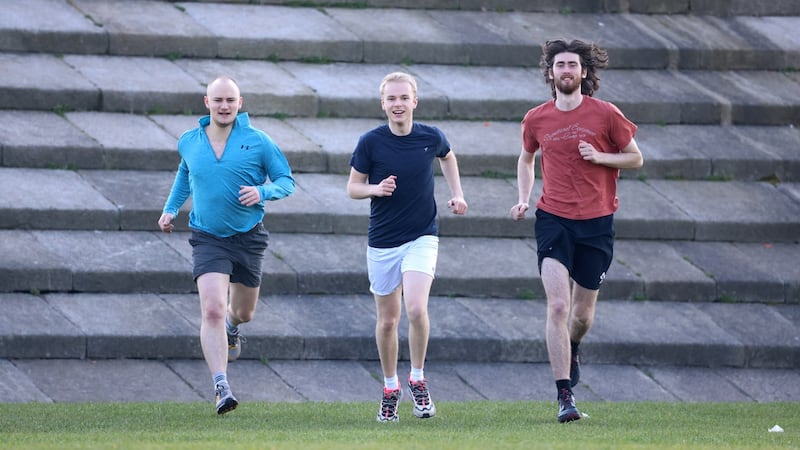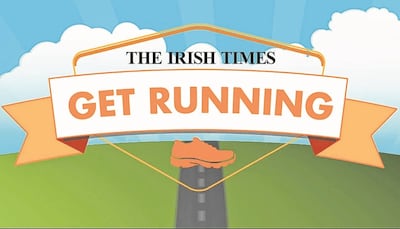A few months ago I came home from work to find my housemates chatting in the living room. “Hey Conor, we’re thinking of doing this race next summer. It’s a difficult one but it should be good craic!”
Biggest understatement I’ve ever heard.
Spartan races are considered by endurance runners as some of the toughest you can do. At a staggering 50km – including 60 brutal obstacles – the Spartan Ultra is the highest level of difficulty. Not only do they want to attempt this behemoth, but they're considering doing it in June in Andorra – yep, that mountainous country nestled into the Pyrenees, littered with steep ski slopes.
Why Andorra? Of course, you can run this race in flatter terrain such as in the south of England; but with pints in Andorra about €2 a pop, there is no competition.
A sensible person would bail at the mention of this race. And I very nearly did. But I felt a strange drive to give it a go. Something in me wanted an exercise goal to work towards.
Why not? Sounds like a fun bonding experience right?
Right?
I’ve never attempted anything remotely like this. While I was quite active as a child, at 23 I’m not exactly in top shape anymore. I don’t know what photo will be used of me for this column, but be assured that I’m not some fitness guru flaunting a six-pack and running around shirtless all the time. I still have my lockdown belly!
Before this, the most I’d ever run was probably 5km in one go. Maybe 10km once or twice. So taking on 50km on steep terrain in high altitude and obstacles that are designed to make you fail miserably?
Did I mention if you’re beaten by an obstacle, the punishment is 30 burpees?
If, at this point, you’re concerned for my health, don’t worry, my mum is also on your side. She’s a nurse and she never fails to tell me this is a stupid idea. So I’m trying to be careful.
Like many others, I started running during the pandemic. Short 3km runs were easy, refreshing and a good chance to get outside. Ramping this up to 50km was never going to be easy, but training would have to start immediately.

Our training began about eight months out from the big day – a little less when you account for the three-week “tapering” beforehand, when athletes must stop most activity to prepare their bodies. 15km runs around Phoenix Park in the dark of winter were a good starting point. My two American housemates and I (only Americans would come up with an idea like this) tried running every week or so until Christmas, desperately trying to avoid the herd of deer by the Papal Cross at night. Supplementing this with do-at-home fitness cards I bought in a charity shop and a membership of my local gym, everything was going according to plan.
My routine was working; my fitness was improving, what could stop me now?
Like everything over the past two years, Covid ruined the fun. I caught the virus alongside half the country back in January and while the symptoms were pretty rough for a couple of days, what came next was much worse.
About a week after re-entering society, long after I’d beaten off the plague, I decided to go to the gym. Foolishly, I jumped into a class called “Fat Burner”.
“A ha!” I thought. “I have rolls of tummy fat to burn after a couple of weeks sitting on my arse.”
Bad idea.
My muscles felt raw. The energy I once had just vanished. I was completely out of breath within minutes. I felt pain in places I’d never felt before and a fear that this virus had stunted my progress.
The next day I was in agony. Piercing muscle pains along my legs prevented me from finding a comfortable sitting position – all day. Despite the pain, I pressured myself to ramp up my training again. “I’ve got a schedule to keep to,” I thought. A 10-minute run a few days later really worried me. Shooting muscle pains with every step put me out of action for over a week, and each painful step seemed to take me further from the mountains of Andorra. I pushed myself too hard.
Before this, I was pretty careful about getting Covid, primarily for fear of spreading the virus to more vulnerable people around me. Now I feel an added layer of dread. Getting Covid again would hammer the nail into the coffin for my Spartan odyssey, and potentially ruin my body once more.
My doctor says these long-term side-effects are normal and not necessarily long Covid. The virus can seriously damage muscles which will take some time to repair. Although it’s difficult to know when I will recover, others I’ve spoken to said they were back at their previous level of fitness in just over a month. For me though, there’s no way to know.
My body is recovering, slowly but surely, and my muscles are regaining their strength. If there’s one bit of advice I’d give to young and healthy people like me: although the pandemic is “over” or whatever, the virus can still really mess you up. Don’t take it lightly.
This supermarathon I’m stupid enough to train for is fast approaching. Summer is just a few months away. I can’t say how prepared I’ll be for the unforgiving Pyrenees, but I’ll certainly give it a go.
Stay tuned . . .

Sign up for one of The Irish Times' Get Running programmes (it is free!).
First, pick the eight-week programme that suits you.
- Beginner Course: A course to take you from inactivity to running for 30 minutes.
- Stay On Track: For those who can squeeze in a run a few times a week.
- 10km Course: Designed for those who want to move up to the 10km mark.
Best of luck!








